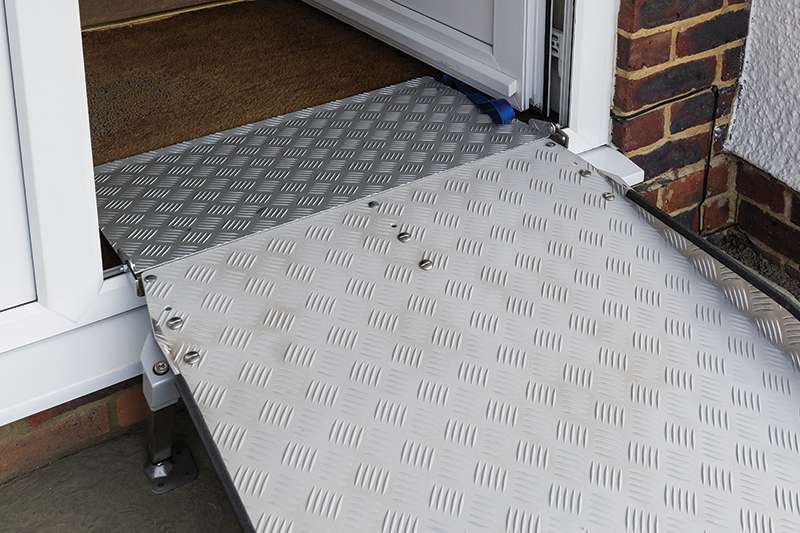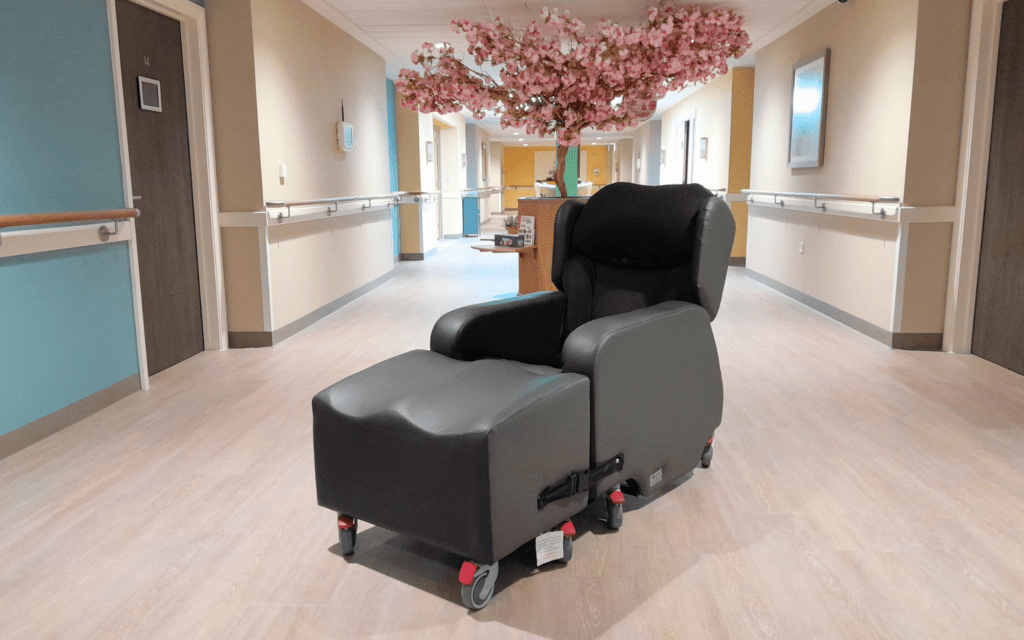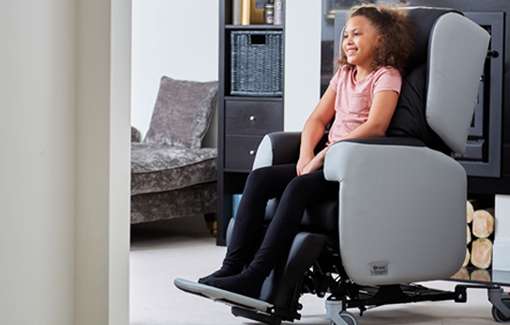An access ramp is designed to make it easier for people that use wheelchairs, mobility scooters, or other mobility aids to cross thresholds, such as doorways or kerbs. The ramp acts as a bridge over uneven surfaces. This can help people with reduced mobility to maintain their independence as they can move steadily between rooms, buildings, and more, without having to stop and ask for assistance.
Ramps also make life easier for carers supporting people with reduced mobility. They help to avoid the struggle of forcing, or even lifting, a wheelchair or scooter over an obstacle.
Jump straight to…
What type of ramp do I need?
When it comes to choosing an access ramp, there is a wide selection of options available. This is great because it means that ramps are versatile and can suit a broad range of user needs. However, the number of choices on offer can also make it difficult to decide which kind of ramp is right for you.
But there’s no need to feel overwhelmed! Each type of ramp is designed for a specific purpose. So, by answering some simple questions when looking for a ramp, you can quickly narrow down the options and find an access ramp that meets your needs.
Here are the three key questions you should be asking before you choose a ramp:
1) Where will the ramp be used?
The kind of ramp that you need depends on where the ramp will be used. Different materials are designed for use on different surfaces, and there are certain regulations that apply to ramps used in public places but not ramps intended for domestic use (we’ll look at that in more detail when we get to question 2).
First, let’s take a look at the five main types of ramp, where they are designed to be used, and some examples to help you visualise the different choices.
Wedges
These small, sleek slopes are mainly designed for crossing internal thresholds. For example, you may use a wedge-style ramp between your living room and kitchen.
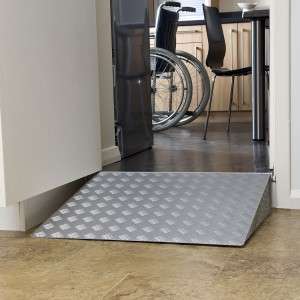
This simple doorline wedge is ideal for crossing raised doorframes.
Although wedges are typically used indoors, you can also use them on external doorways providing the frame isn’t raised too high.
But when choosing a ramp for external doors, you may prefer a ramp which is specially designed to work well with the material the door is made from. This helps to ensure stability and prevents damage to the door.
PVC-Friendly Ramps
These ultra-lightweight ramps are specifically designed for use on PVC surfaces. This makes them a very popular choice for front doors.
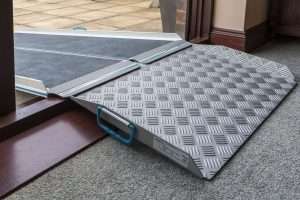
The Doorline Multi has a unique rubber anti-slip lip that secures the ramp onto the doorway and protects the PVC frame.
Ramps for Wooden/Level-Access Door Thresholds
Previously, we mentioned that you can use wedges on some external thresholds.
Well, external doors that have a wooden doorframe or level-access point, i.e. a single, flat doorstep, are examples of when it can be possible to use this type of ramp outside.
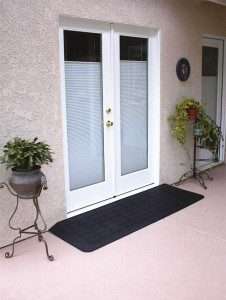
The Doorline Neatedge is perfect for outdoor use as it is made from weather-resistant rubber.
However, if the single step is quite high then you may find an aluminium ramp more manageable.
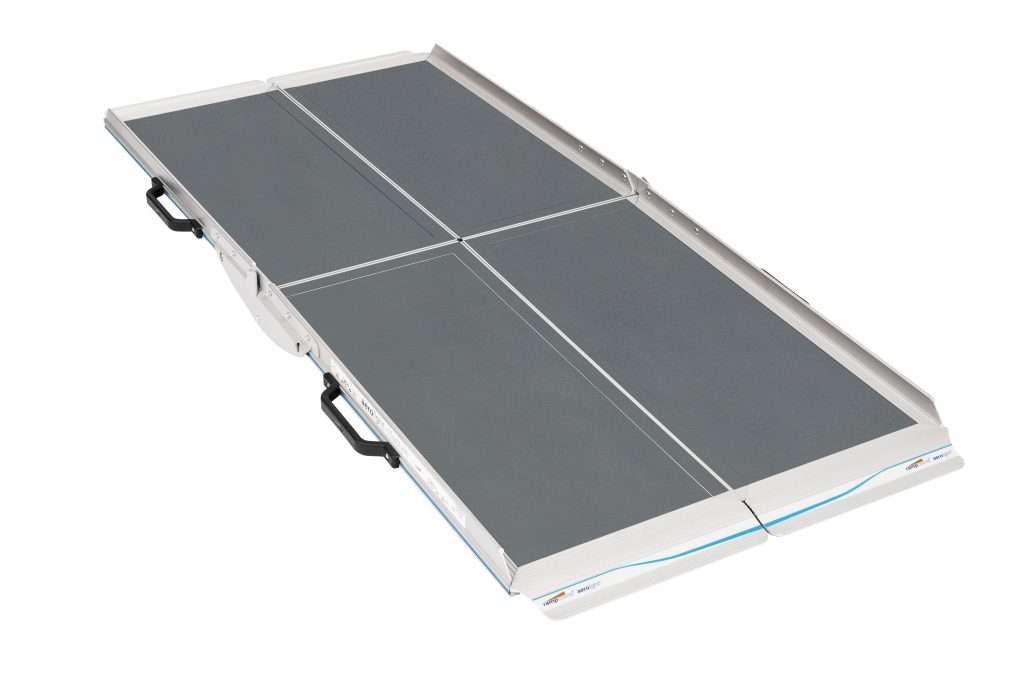
The Aerolight Range has lots of fantastic, cost-effective options for aluminium ramps. They offer full-width anti-slip and are protected against corrosion for prolonged outdoor use.
Ramps for Stairs
A lot of the time, a ramp will need to handle more than just a raised doorframe or a single step.
In these cases, you will need a larger ramp that is designed to help wheelchairs and scooters get up, or down, a set of steps.
The Welcome Ramp System is a great option for this use case. It is made from modular components, which means it can be easily adjusted to work with most sets of stairs. You can also add handrails to give more support for users.
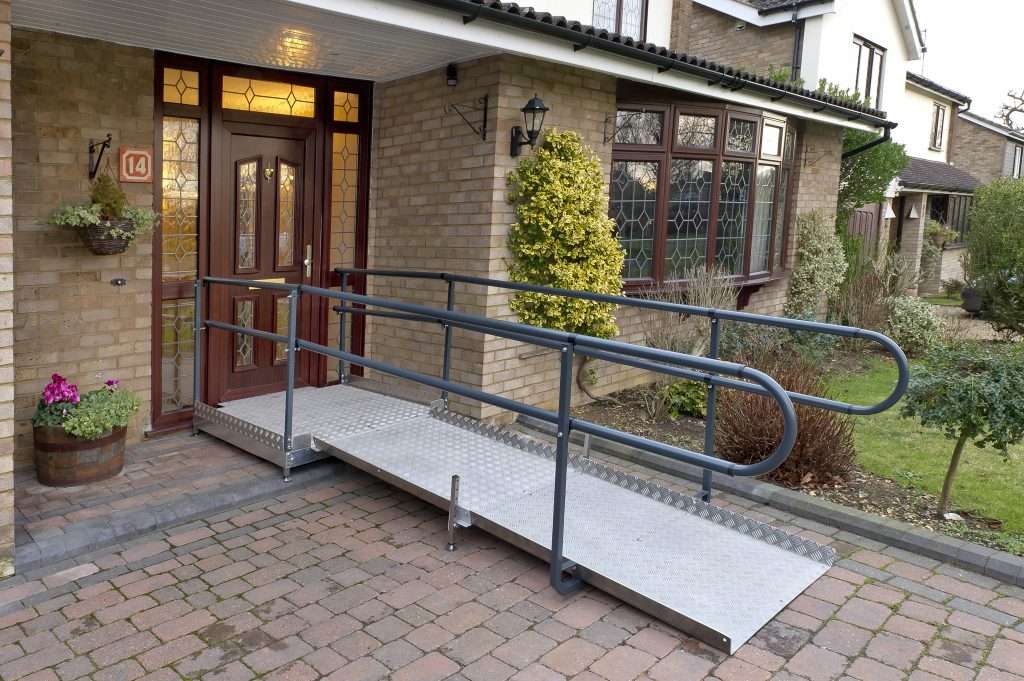
Vehicle Access Ramps
As the name suggests, these ramps are designed to help get wheelchairs and scooters in and out of vehicles. Carers often turn to these ramps because they cannot lift the mobility aid into the vehicle by themselves.
For vehicle access, you will want to select a folding or telescopic ramp. This will allow you to store the ramp more easily when it is not in use.
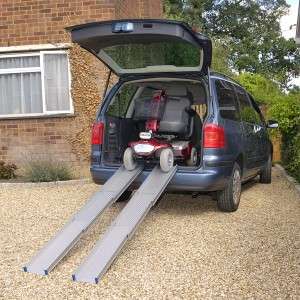
The Ultralight Telescopic is a popular vehicle access ramp.
The Ultralight comes in 2 or 3 section versions to suit vehicles with different amounts of storage space. This style of ramp is called a channel ramp, it is made up of two slim parallel ramps rather than one single section.
Some people find channel ramps difficult to use as you have to properly align the mobility aid’s wheels in order to successfully move it up or down the ramp.
In these cases, the Aerolight Lifestyle is often used instead. It can still be split into 2 sections, which can then be folded, for storage. But it’s also full width which can be easier to use.
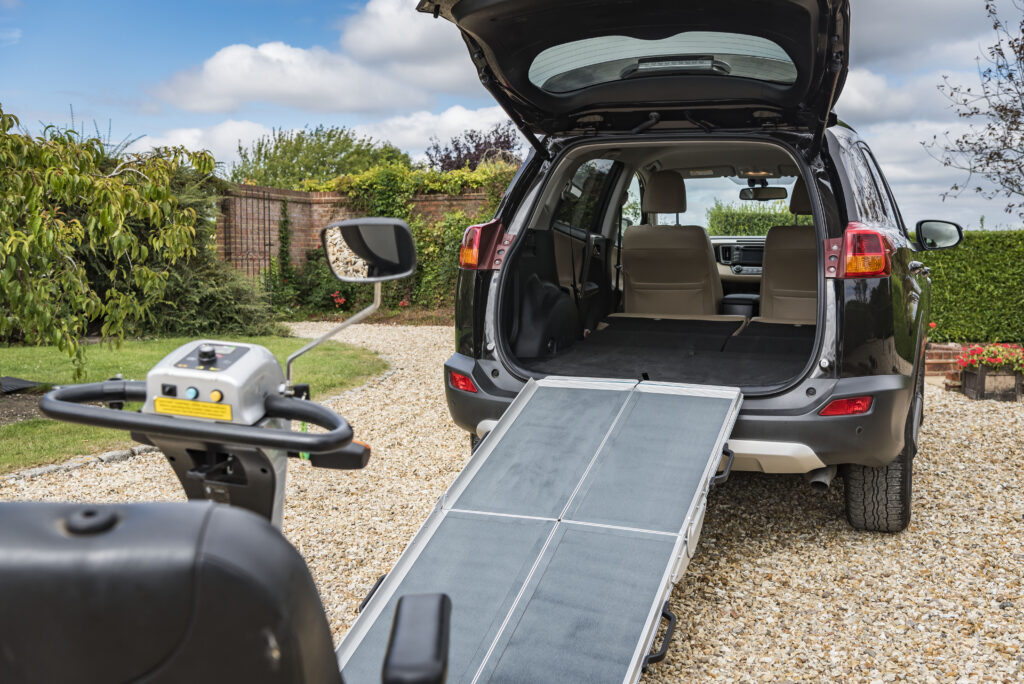
2) What size ramp do I need?
After deciding on which style of ramp you might want, it is also important to make sure you choose a ramp that is the correct size for your needs.
There are three main measurements that you need to think about when choosing what size ramp to get — steepness, length, and width.
Steepness & Length
Ramp steepness is closely related to ramp length — the shorter the ramp, the steeper the slope.
Remember that it is harder to move a wheelchair or scooter up a steeper ramp. It’s like walking up a hill — the steeper it is, the faster you get tired.
So, if you want a ramp that is easy to use then you should choose a longer one!
Most of the time though, you will need to balance ease of use with the space that’s available for the ramp. There won’t always be enough room for a longer ramp.
The tables below provide some more guidance for how steep and how long your ramp should be.
How Steep?
| Steepness Gradient* | Acceptable For… |
| 1:6 (10-degree angle) | Some short thresholds, after the completion of a risk assessment. |
| 1:8 (8-degree angle) | Situations where gradient needs to be balanced with available space. Again, a risk assessment should be completed first. This gradient is often used when selecting portable ramps. |
| 1:12 (5-degree angle) | Most social services and local authorities. This is the minimum requirement installed ramps under Building Regulation. |
| 1:15 (4-degree angle) | Installed public access ramps. |
*The steepness gradient is calculated based on the height of the tallest step where the ramp will rest. So, a ramp with a 1:12 gradient will have a ramp length 12x the height of the tallest step. 1:6 is the steepest gradient and 1:15 is the shallowest.
To measure the height of the tallest step, you will need to measure the height difference between the lowest position where the ramp will rest to the highest position where it will rest.
How long?
| Height of the tallest step is up to… | Ramp length at 1:6 | Ramp length at 1:8 | Ramp length at 1:12 | Ramp length at 1:15 |
| 10cm (4ins) | 60cm (2ft) | 80cm (2ft 8ins) | 120cm (4ft) | 150cm (5ft) |
| 15cm (4ins) | 90cm (3ft) | 120cm (4ft) | 180cm (6ft) | 225cm (7ft 5ins) |
| 20cm (8ins) | 120cm (4ft) | 160cm (5ft 4ins) | 240cm (8ft) | 300cm (9ft 10ins) |
| 25cm (10ins) | 150cm (5ft) | 200cm (6ft 8ins) | 300cm (10ft) | 375cm (12ft 4ins) |
| 30cm (1ft) | 180cm (6ft) | 240cm (8ft) | 360cm (12ft) | 450cm (14ft 9ins) |
| 45cm (11ft 6ins) | 270cm (9ft) | 360cm (12ft) | 540cm (18ft) | 675cm (22 ft 2ins) |
| 60cm (2ft) | 360cm (12ft) | 480cm (16ft) | 720cm (24ft) | 900cm (29 ft 6ins) |
Ramp length is also based on the height of the tallest step. But, because the two measurements are related, you also must consider the steepness gradient you want your ramp to have when choosing its length.
Need some help?
If you’re finding all these numbers a bit much, don’t worry! Give us a call on 01423 799960. We’ve installed lots of ramps over the years, so a member of the team will be happy to help you work out what size ramp you need.
Width
At this point, we’re sure you’ll be pleased to hear that deciding how wide your ramp should be is less complicated than determining its steepness and length! There are two main things that you need to consider:
- The size of your wheelchair or mobility scooter — Before purchasing a ramp, double-check that it is wide enough to comfortably fit your wheelchair or scooter.
- The size of the threshold — Ideally, the ramp will be as wide as the threshold being crossed. For example, if your doorway was 36ins wide you should look for a ramp that is 36ins wide. This prevents the risk of falling over the edge of the ramp when using it. Many ramps are width-adjustable to fit a range of thresholds.
3) Do you need a ramp for more than one location?
Now that you’ve chosen what kind of ramp you want and what size it needs to be, the final thing to consider is whether you want a portable ramp or one that is permanently installed.
In some cases, the decision will be made for you. For example, vehicle access ramps need to be portable as you only get the ramp out when you actually need to use it. But sometimes, the choice will be less clear cut.
So, to complete this guide to choosing an access ramp, let’s look at the pros and cons of permanent and portable ramps.
Permanent vs. Portable Ramps
A portable ramp folds or breaks down into component parts, to make it easier to store and transport. Some, like the Aerolight Xtra Ramp, even fold down to reveal handles so they can be carried like a suitcase! As they are designed to be moved around, they are also very lightweight.

This kind of ramp is great for people who like to travel. If you have a robust wheelchair or scooter which can handle most terrains, then a portable ramp can be handy for the times where you just need a bit of assistance whilst you’re on the go.
They are also useful when the ramp isn’t needed all the time. For example, if you have a relative with reduced mobility then you may choose to get a portable ramp to assist them when they come to visit. Or, if you have a wheelchair or scooter which you don’t use on a daily basis then you may prefer to have a portable ramp in your own home so that you can store it away on the days where you don’t need it.
Portable ramps also don’t require any installation. This means that they are typically cheaper and delivered faster than permanent ramps.
However, a portable ramp can be inconvenient if you suddenly need it when it isn’t set up. They can also be less stable than some permanent options when being used in a single location for prolonged periods.
A permanent ramp is typically made from aluminium, concrete or wood that is fixed in place. They are robust and highly stable, as long as they have been installed correctly.
At Vivid Care, our team of experts can take care of the design, manufacture, and installation of custom-built permanent ramps.
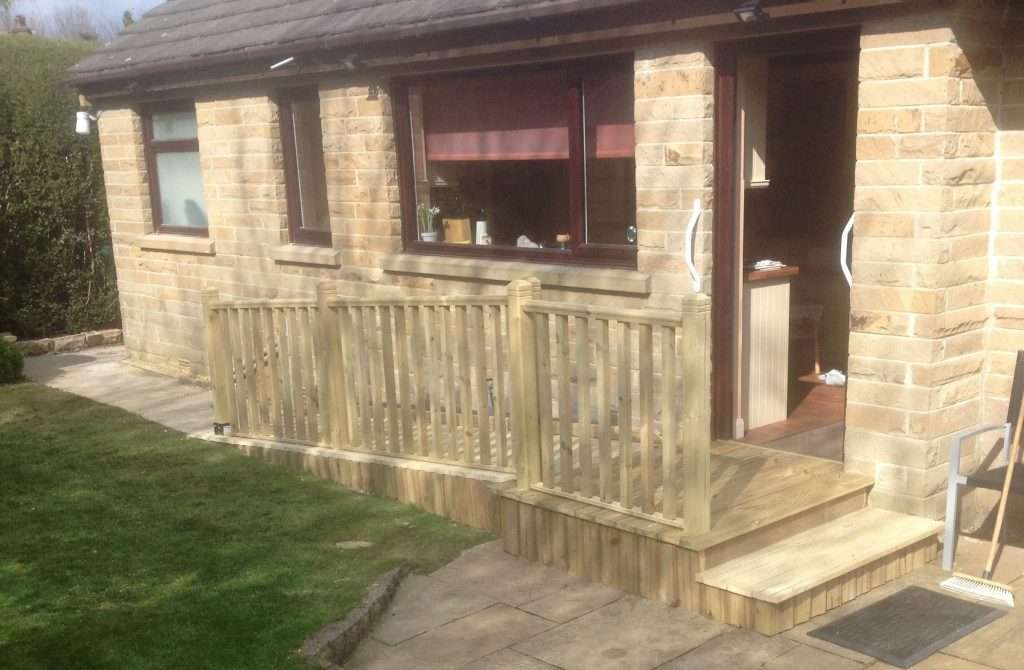
The fact that permanent ramps can be custom-built is often one of the reasons why people choose them. It gives you greater control over both the functionality and the appearance of the ramp. They can be built to your exact specifications and can be much more attractive than portable ramps.
They are popular for entrances. Many people who use wheelchairs or mobility scooters every day prefer to have a permanent ramp at their front door. They are also better suited to public places which need to be accessible to all e.g. libraries, schools or hospitals.
When it comes to choosing a portable or permanent ramp, there really is no right or wrong answer. It comes down to whichever type of ramp you think will best serve you. It may even be that you opt for both — a permanent ramp for the main entrance and a portable one to use for internal thresholds.
Ramp Assessments
If you are considering a permanent ramp system, or you have a complex situation, then we would recommend a no-obligation site survey from one of our specialists.
Alternatively, visit our Harrogate showroom to see some ramps for yourself, including a great example of what can be done with a wooden custom-built ramp!
Summary
When choosing a ramp there are a lot of options and factors to consider. But answering the three simple questions provided in this guide will help you to find the ramp that best suits your needs. Consider where your ramp will be used, what size it needs to be, and whether it needs to be portable before you make a choice. Once you’ve done this, you’ll be able to decide whether a rubber wedge, lightweight telescopic ramp, or custom-built ramp system is the right choice for you.





